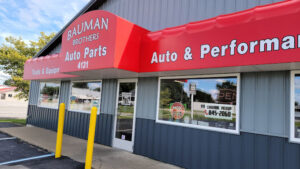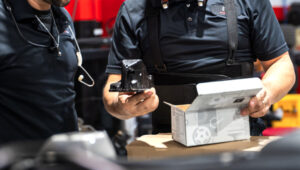The populations of jobbers and retail auto parts stores are heading in opposite directions due to changes in the marketplace
Fort Wayne, Ind.—Two types of auto parts stores supply aftermarket components to the Do-It-Yourself (DIY) and Do-It-For-Me (DIFM) markets: jobbers and retail auto parts stores. Over the past six years, the population mix of auto parts stores has changed significantly due to the shifting populations of jobbers and retail auto parts stores nationwide, according to the latest Lang Aftermarket iReport.
“Changes in the numbers of jobbers and retail auto parts stores have substantial consequences for how auto parts are supplied to DIYers and installers, the brands available to them, and the speed and convenience of auto repair in the U.S.,” states the analysis.
Here are the key takeaways from the report.
Changing Auto Parts Store Mix
The number and mix of auto parts stores (jobbers and retail auto parts stores) changed substantially between 2017 and 2023. The outlet population shift between jobbers and retail auto parts stores remained strong over those six years.
Automotive Jobbers
At mid-year 2013, there were over 17,100 automotive jobber stores across the country, with about 200 fewer jobber outlets by 2015.
The jobber store decline continued, with just over 16,100 jobber outlets in 2023. The final analysis of the jobber population at mid-year 2023 will be available in June.
Retail Auto Parts Stores
As the jobber population fell between 2017 and 2023, the number of retail auto parts stores steadily climbed. From about 19,100 outlets at mid-year 2013, the population of retail auto parts stores neared 19,500 during 2015.
At mid-year 2023, there were over 20,000 retail auto parts stores nationwide, a record high. In June, Lang Marketing will finish its analysis of outlet counts for 2023.
Fewer Auto Parts Stores
Despite the growth of retail auto parts stores nationwide, the number of auto part stores (jobbers and retail auto parts stores) declined by approximately 450 between 2017 and 2023.
Shifting Outlet Mix
There were about 800 more jobbers than retail auto parts stores in 2008. However, the population mix changed swiftly, and by 2023, retail auto parts stores outnumbered jobbers by nearly 1,900.
Based on preliminary findings, Lang Marketing estimates that the number of jobber Stores fell by 5% between 2017 and 2023 (despite a $17 billion increase in aftermarket product volume), and the retail auto parts store population expanded by 2%.
The decline of jobbers more than offset the rise in retail auto parts stores. Accordingly, the number of auto parts stores (jobbers and retail auto parts stores) fell by about 450 over the past six years despite the sharp increase in aftermarket annual volume.
Factors Changing the Outlet Mix
The populations of automotive jobbers and retail auto parts stores are heading in opposite directions due to changes in the marketplace and the differing success of each outlet group in adapting to these changes.
Fewer Automotive Jobber Stores
Several factors have caused the steady decline in the number of automotive jobbers.
• Jobbers have been unable to maintain their share of the increasing Do-It-Yourself market. Over the past six years, jobbers’ DIY share has declined by nearly one-fifth.
• Jobbers face increased competition from retail auto parts stores in the commercial market, which has been the mainstay of jobbers’ business for many years.
• The jobber store decline is the growth of two-step distribution by traditional warehouses, which by-pass jobbers and sell directly to commercial accounts and other end-users.
More Retail Auto Parts Stores
Retail auto parts stores have increased in number because they have adapted successfully to the changing marketplace. They have maintained a commanding share of the DIY market despite the growth of auto parts eCommerce by large platforms and other eSellers.
The commercial business is the fastest-growing segment of retail auto parts stores’ volume. They have been winning that battle with jobbers by expanding their product offerings and increasing the number of locations so they can better supply the commercial market.
Future Developments
Based on preliminary findings, the number of jobbers continued to decline in 2023 and retail auto parts stores increased in population. Lang Marketing expects this trend will continue for the foreseeable future.
As the populations of retail auto parts stores and jobbers move in opposite directions, retail auto parts stores will continue expanding their commercial market share (at the expense of jobbers), and jobbers will experience a decline in their DIY market share.
While automotivejobbers will continue to be a major force in the DIFM and DIY markets, Lang states that their shrinking shares of these two market sectors will encourage more traditional warehouses to expand two-step distribution, increase direct relationships with installers and other end-users, and bypass jobbers.
Those changes in how products pass through the different segments and levels of the distribution system will cause manufacturers and marketers to reassess how their brands can best reach DIFM and DIY customers.







Comments are closed.